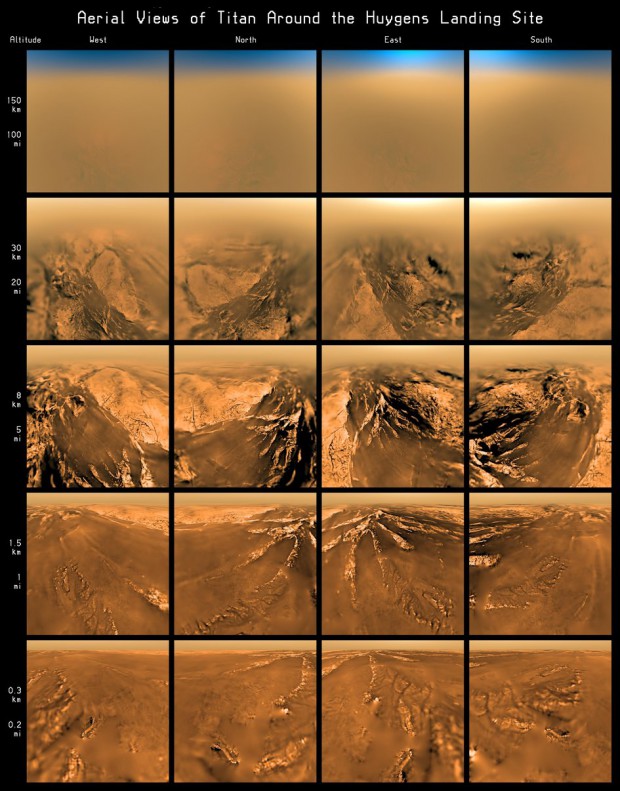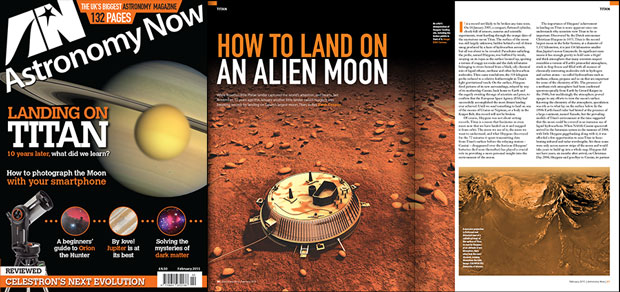Ten years ago today, on 14 January 2005, a compact, flattened cylinder called Huygens, chock-full of sensors, cameras and scientific experiments, went hurtling through the orange skies of the mysterious moon Titan.

The surface of Titan was still largely unknown at the time, hidden behind a veil of dense smog produced by a haze of hydrocarbon aerosols, but all was about to be revealed. As its parachutes unfurled, Huygens was buffeted by winds, swaying on its ropes as the surface loomed up, a terrain of craggy ice-rocks and the dark tributaries belonging to rivers formed from a black, oily chemical mix of liquid ethane, methane and other hydrocarbon molecules. Then came touchdown, the 318 kilogram probe reduced to a relative featherweight in Titan’s light gravitational touch. On the surface, Huygens fired pictures of its new surroundings, relayed by way of its mothership Cassini, back home to Earth and the eagerly awaiting throngs of scientists and press, to confirm that the European Space Agency had successfully accomplished the most distant landing ever achieved. Until we send something to land on one of the moons of Uranus or Neptune, or a body in the Kuiper Belt, this record will not be broken.
Huygens spent 72 minutes transmitting data from the surface of Titan before the relaying station – Cassini – disappeared over the horizon (Huygens’ batteries died soon thereafter). Yet in that short time it provided a profound view of this alien moon.
“We didn’t know what we would land on, whether it would be solid ice as hard as granite or a liquid sea,” says Professor John Zarnecki of the Open University, who was the lead scientist on the probe’s Surface Science Package, which was one of six instrument suites onboard Huygens. “So for ESA the primary mission was to make measurements of the atmosphere. Survival on the surface was always going to be an added bonus.”
What a bonus though. Zarnecki’s team suspect that Huygens hit a pebble before touching down on softer, icy gravel. Round pebbles are formed by the action of liquid flowing over rocks (or rock-hard chunks of ice, in this case), smoothing their edges through abrasion. Clearly liquid had flowed over Huygens’ landing site at some point, perhaps only ten or fifteen years earlier. Huygens had come down in either a floodplain or a dried-up seasonal lake (the seasons on Titan last much longer than Earth’s seasons, by virtue of its greater distance from and longer orbit around the Sun).

“Cassini and Huygens have done a fantastic job showing what a varied place Titan is,” Zarnecki tells Astronomy Now. “In some ways it is incredibly frustrating because although the mission has been an enormous success, we have just got to go back and do a lot more stuff because Cassini has shown how varied the surface is. There are dunes, cryo-volcanoes, river systems, lakes. Titan has absolutely lived up to the hype.”
For more about the anniversary of the Huygens landing, see the February issue of Astronomy Now, on sale 15 January from newsagents, or available from our online store in print or PDF format. Alternatively you can read the magazine on the Pad or iPhone or Android devices.





